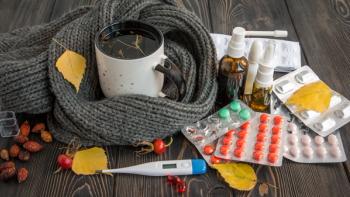
Patients at Higher Risk During the Holidays
Women and those in their 50s and early 60s reported the most stress about COVID-19
A
Women and those in their 50s and early 60s were more likely to report feeling a lot of
The poll found that 27% of people over 50 said that just thinking about leaving their house caused them stress about the possibility of catching the coronavirus, while 58% said thinking about going to a crowded indoor space made them feel stressed for the same reason.
The poll is based at the University of Michigan
“The clear differences in ability to find joy during these times, and in experiences of stress, based on health status, shows the importance of focusing on those in poor health,” said poll report
The poll was taken before widespread availability of booster doses of COVID-19 vaccine for older adults.
Fifteen percent of the older adults polled said they’ve become more resilient and able to “bounce back” or overcome challenges during the pandemic, while 71% said they are just as resilient as they were before the pandemic.
Other poll findings:
- About half (47%) of poll respondents report a mixed experience of joy and stress
- 37% of older adults who say their health is poor reported feeling a lot of stress, compared with just 12% of those who say their health is excellent or very good.
- 62% of those who say their mental health is poor reported feeling a lot of stress, compared with just 8% of those who call their health excellent or very good.
- 26% of those in the lowest household income bracket said they feel a lot of stress, compared with 18% of those in the highest.
- 20% of older adults say they feel a lot of stress these days, while 38% said they have little to no stress. Those aged 50 to 65 were nearly twice as likely as those aged 65 to 80 to said they experience a lot of stress (25% vs. 13%).
- 17% of older adults polled said they feel little or no joy these days, but 53% said they feel some joy and 30% say they are feeling a lot of joy.
- The most common sources of joy cited by poll respondents were being outdoors (87%), physical activity (72%), hobbies or projects (72%), being alone (58%) and pets (56%).
- Relationships with others are important sources of joy, including friends (cited by 80% of poll respondents), children (70%), spouses or partners (64%) and co-workers (61%).
- A nearly equal percentage said they got joy out of in-person and virtual connections with others, at 83% and 79% respectively. Other sources of joy: volunteering (43%) and faith-related activities (39%), social media (37%) and attending online events (22%).
This article originally appeared on Medical Economics .
Newsletter
Pharmacy practice is always changing. Stay ahead of the curve with the Drug Topics newsletter and get the latest drug information, industry trends, and patient care tips.
























































































































